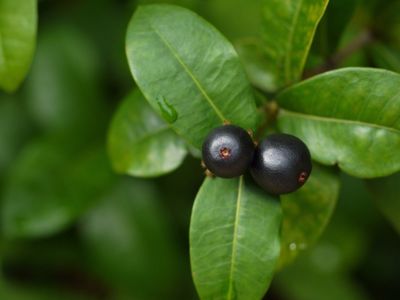What is Chinese Box Orange
Severinia buxifolia is native to southern China, Vietnam, Malaysia, and the Philippines, where it can often be found growing in thickets and forests. This member of the citrus family is a slow-growing evergreen shrub with thick, dense foliage. Like most citrus, the box orange has thorns. It produces fragrant white flowers in spring and summer. These are followed by seedy black fruits that rarely exceed half an inch (1 cm.) in length. The oval-shaped fruit tends to be inconspicuous but serves as a food source for birds. This shrub is sometimes referred to as a boxthorn, as the small, oval leaves are quite similar to boxwood (Buxus spp.). Like boxwood, this shrub is highly valued when cultivated and trimmed as a hedge. The boxthorn plant has been introduced into Florida, where it is hardy in USDA zones 8B through 10. Although it has escaped cultivation, it does not appear to be an invasive species in Florida. The box orange can also be grown along southern and western coastlines and inland areas where tropical plants are hardy.
What is Atalantia buxifolia
In 1988, an international collaborative effort was undertaken to catalog and publish descriptions of over 30,000 native Chinese plants. Although still scientifically classified as Severinia buxifolia in other taxonomical publications, the “Flora of China” lists the box orange as Atalantia buxifolia. In addition, variants of the box orange have been discovered throughout its native distribution range. These variants differ in physical characteristics, such as leaf shape or thorn size, as well as physiological traits. As of yet, these Chinese box orange variants have not been recognized as different species, subspecies, or varieties.
Additional Uses of Boxthorn
In Cantonese, the common name for Atalantia buxifolia is “tsau ping lak,” which translates as “wine cake thorn.” It’s rumored the Chinese use boxthorn leaves when making yeast cakes. This is likely a very localized dish as recipes are not readily available in Western culture. Finally, one of the most promising uses of the Chinese box orange is for root stock when grafting citrus trees. Here’s why:
Pest resistance – Although susceptible to root nematodes, the box orange rarely suffers long-term health issues from these pests. Genetic diversity – As a distant cousin to many commercial citrus species, the boxthorn plant has natural immunity against common citrus diseases. Small stature – When left unpruned, the box orange rarely exceeds 12 feet (4 m.) in height, making it an ideal rootstock for dwarf citrus trees.Boron tolerance – Citrus trees grafted onto box orange rootstock show a higher tolerance for boron levels in the soil. This allows commercial growers to utilize boron-rich acreage which otherwise couldn’t support citrus trees.
